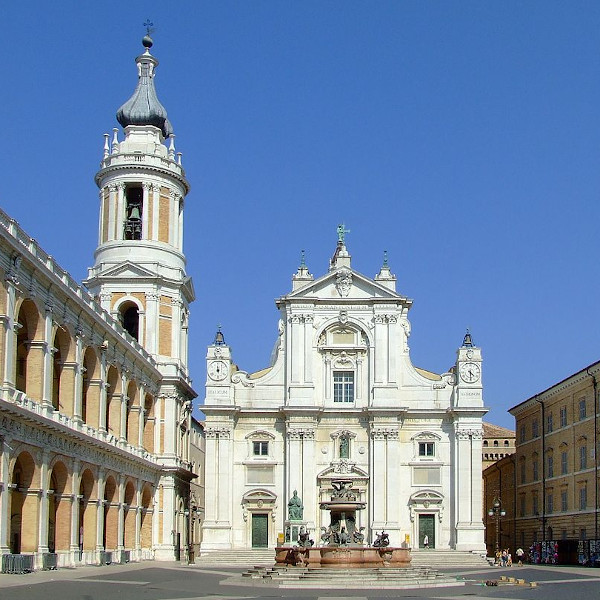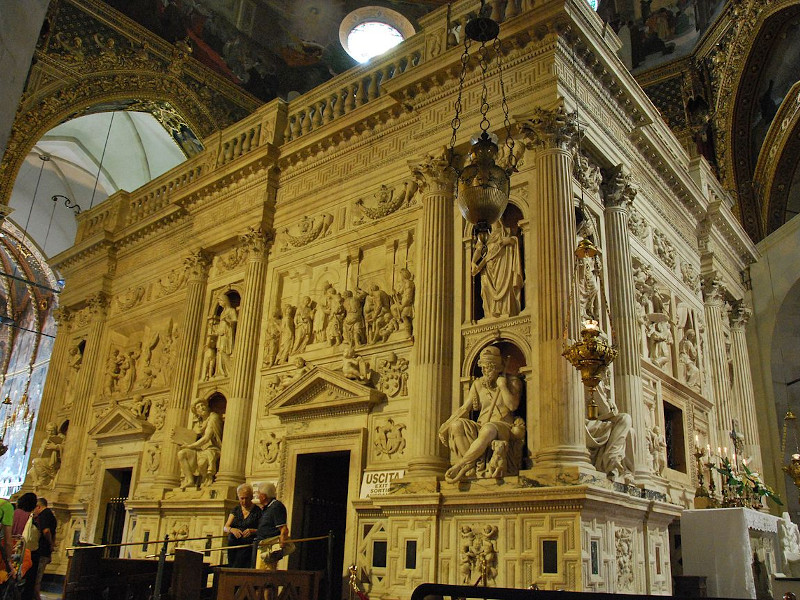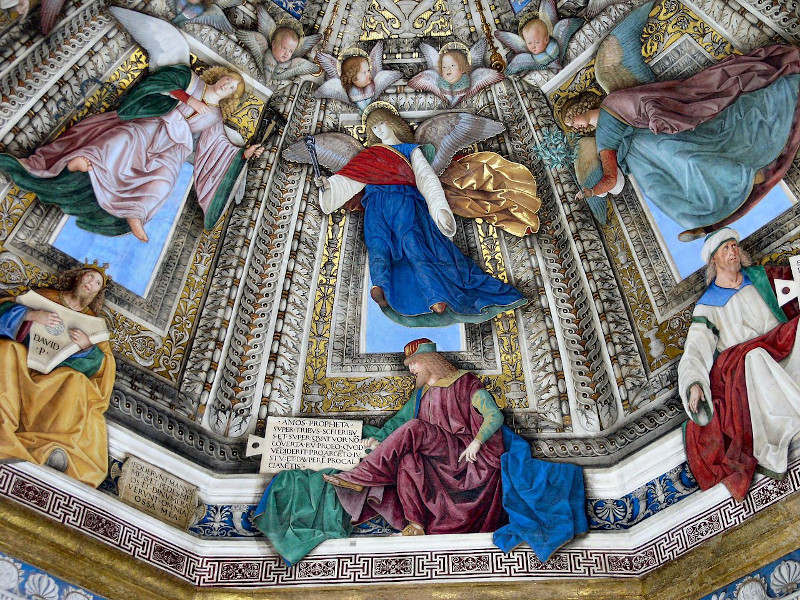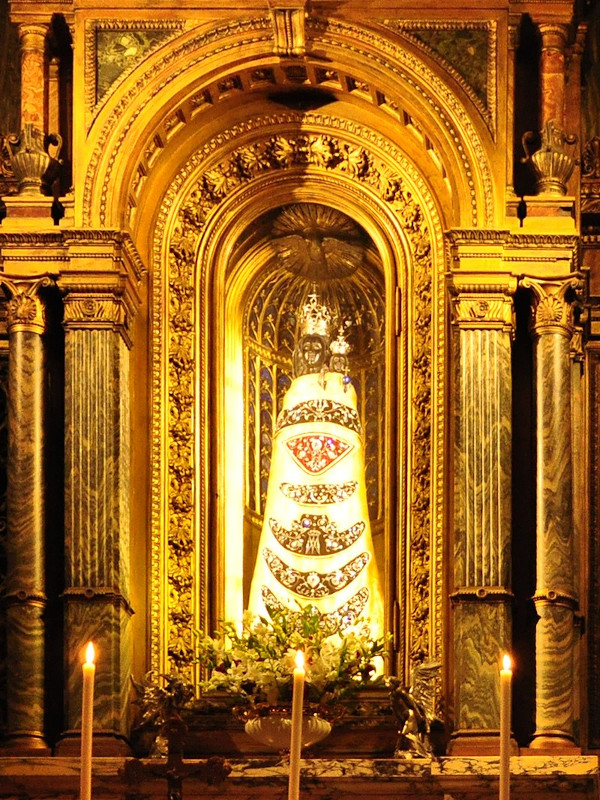Basilica della Santa Casa (Temple)

Basilica della Santa Casa
1294 AD - 1770 AD
A basilica is known for enshrining the Holy House in which the Blessed Virgin Mary is said to have lived. It has been a Catholic pilgrimage destination since at least the 14th century and a popular tourist destination as well.
The Holy House itself (in Italian, the Santa Casa di Loreto) consists of three stone walls. It is a plain stone structure, with a door on the north side and a window on the west. The size is 31 x 13 feet,i(or 9.52 m by 4.10 m and 4.30 m high.
The "house" contains the "Altar of the Apostles", venerated as the authentic one built by St Peter and the Apostles.
A niche contains a 33 inches hig black image of the Virgin and Child, a statue made of Lebanon cedar, richly adorned with jewels, placed above the altar.
A legend attributes the statue to Saint Luke, described in the Bible a physician, with a later tradition adding painting to his skills, and here given also the attribute of a sculptor; but its style suggests it was created in the 15th century.
Pious legends claim the same house was flown over by angelic beings from Nazareth to Tersatto (Trsat in Croatia), then to Recanati, before arriving at the current site.
The basilica is also known for enshrining the Madonna and Child image of “Our Lady of Loreto” in relation to the relics held at the site.
Events (8)
for 
Attachments
Marble screen around the Holy House A tall marble screen surrounds the Holy House: The four sides represent the Annunciation, the Nativity, the Arrival of the Santa Casa at Loreto and the Nativity of the Virgin.
Dome of the Sacristy of St Marc The basilica as a whole is thus a collaborative work by generations of architects and artists. A fresco by Melozzo da Forlì adorns the dome of the Sacristy of St Marc in the Basilica
Our Lady of Loreto The title of the Virgin Mary with respect to the Holy House and for her statue displayed inside the Holy House. It has been stolen, returned, burned and replaced.











